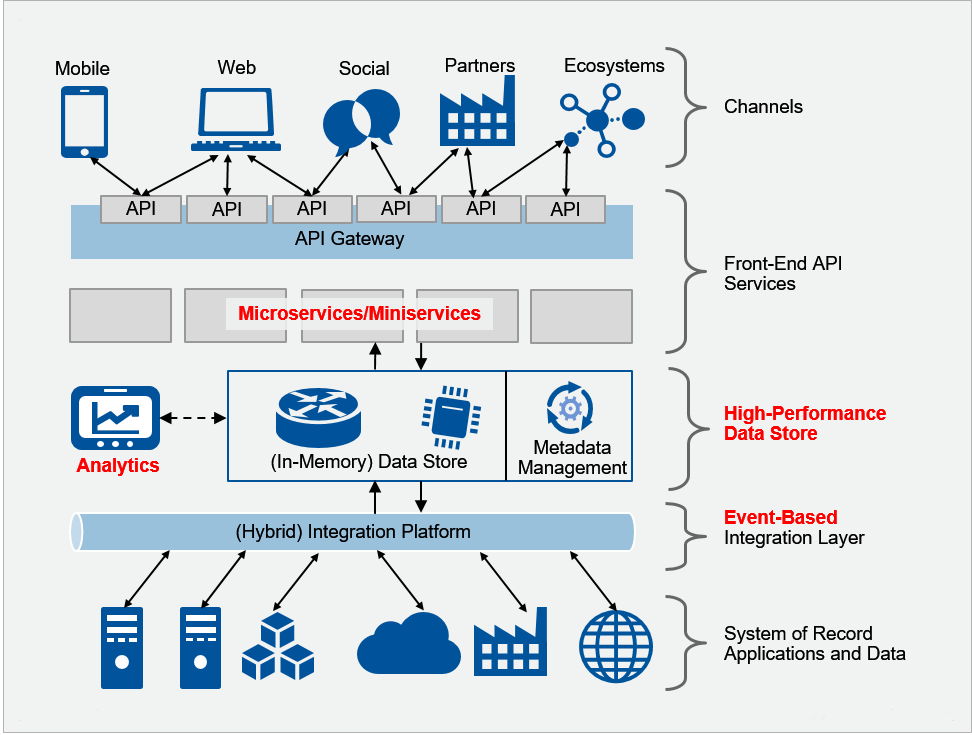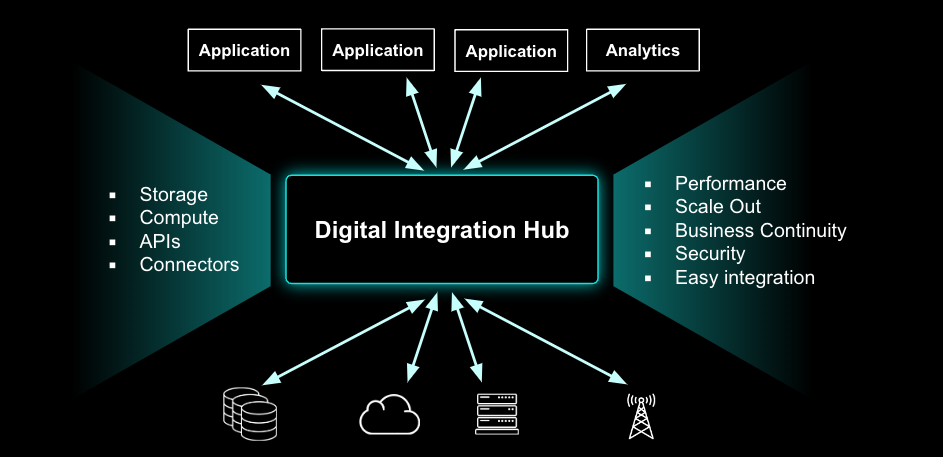Digital Integration Hub

In today’s digital landscape, data connectivity is paramount. Enterprises need seamless data integration across various applications and cloud environments to maintain operational efficiency and agility. Enterprise Integration encompasses the technologies and processes that facilitate the connection of data, applications, and devices throughout an organization’s IT infrastructure.
What is a Digital Integration Hub?
A Digital Integration Hub (DIH) is a software architecture that centralizes access to data from various sources, providing fast and efficient data delivery. It enhances data processing through actions like transformation and normalization, thereby reducing the load on primary data systems. DIHs utilize low-latency storage solutions, such as in-memory data grids or databases, ensuring high-speed data access and manipulation. Additionally, their scalable, distributed architecture supports large data volumes and real-time data integration from diverse sources.
Integration hubs, whether referred to as digital, enterprise, storage, or cloud integration hubs, serve a similar purpose: they connect multiple applications across different environments without the need for extensive coding. With a user-friendly graphical interface, these tools allow businesses to orchestrate workflows by simply dragging and dropping components. For instance, you can automate sending a Slack message whenever a new lead is added to your marketing automation platform, all without writing a single line of code.
Why Do You Need a Digital Integration Hub?
Organizations often face the challenge of data silos, where data is isolated by source or purpose, hindering access and integration. This fragmentation leads to inefficiencies, miscommunication, and errors in business operations. A DIH eliminates these silos, offering a unified access point to all necessary data, regardless of its original location. This is crucial for integrating streaming and historical data, enabling advanced analytics and machine learning applications.
Consider a retailer using a Customer 360° application: a DIH can provide comprehensive customer interaction histories from multiple channels (in-store, online, support, social media) in real-time. This consolidated view enhances customer service, reduces churn, and prevents abandoned shopping carts.
Ask yourself these questions:
- Is your enterprise architecture complex?
- Do you navigate multiple apps daily to accomplish tasks?
- Is your digital content dispersed across various cloud storage accounts?
- Do you need to enhance your tech stack without extensive IT projects?
- Are you interested in testing new tools without full-scale implementation?
If you answered yes to any, an integration hub could be beneficial. It acts as a digital organizer, centralizing your digital assets and providing AI-powered tools for transcription, captioning, indexing, and metadata management, thus enabling efficient content discovery and natural language search.
What are the benefits of an integration hub?
A digital integration hub offers numerous advantages by decoupling data sources and targets and employing a publish-and-subscribe approach for complex integrations:
- Consistent Cloud and On-Premise Integration: Ensures seamless data integration across different environments.
- Enhanced Data Synchronization: Facilitates faster and more efficient data sync between applications.
- Cost and Complexity Reduction: Standardizes processes to lower costs and simplify management.
- Integration Point Management: Simplifies the management of new integration points.
- Governance: Provides oversight and control over system integrations.
- Simplified Automation: Enables self-service access for business users, simplifying automation tasks.
- Real-time Data: Minimizes lag times and enables real-time data access from various databases.
- Auto-sync Data: Uses a services layer to auto-synchronize data with backend sources, eliminating the need for direct API interactions.
- Scalability: Offers enterprise-level security, speed, and capacity on the public cloud, with the ability to scale based on demand.
- Unified Interface: Provides a single platform for process owners and developers to build and visualize business processes and integrations.

Comprehensive diagram (Source: Gartner)

Simplified version
